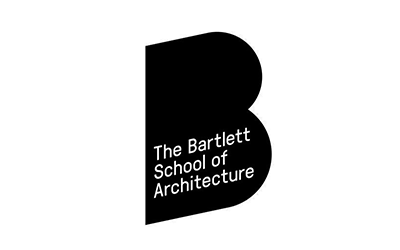Cyber—PiraMMMida

Cyber-PiraMMMida is a transdisciplinary, transmedia project devoted to ridiculing, tricking, twisting, queering, resisting – and perverting – the pyramidal spectres and structures which haunt the worlds of architecture, art, academia and the everyday. In particular, Cyber-PiraMMMida is fascinated by "fake horizontals": pharaonic edifices of exploitation masquerading as paragons of grassrootist virtue.
PiraMMMida is named in anti-homage to MMM Bank, an infamous pyramid scheme established by convicted fraudster Sergei Mavrodi (1932-2018) in 1991 in Russia. MMM Bank spread to much of the Global South and Global East in the 2000s and 2010s, in the process defrauding thousands of vulnerable people of their livelihoods – some of whom joined the scheme perfectly knowing its fraudulent nature but still desiring to cash out before others as it collapses.
🥒 🥒 🥒
The pyramidality of socio-political structures is embedded in our collective human imaginaries, materialities and passions: it has survived a multiplicity of plagues, wars, natural disasters and other calamities over the centuries. The current COVID-19 outbreak is no exception. The plague is not a leveller.
Cyber-PiraMMMida – an online portal and a consequent virtual symposium – is constructed around three conceptual cornerstones: Power, Planet and Plague.
Contributors – artists, architects, thinkers, activists, scholars and others – each try to make sense of (and to pervert) the verticalities, horizontalities, perpendicularities and other political geometries (real and fake), which constitute the contours of our present-day pyramids in a time of pandemic, planetary meltdown and fascism resurgent.
🥒 🥒 🥒
Pyramidal structures continue to define the spatiality of both physical and metaphysical institutions: from cities obsessed with soaring verticalities and efficiency distributions to the new cults and religions of seemingly “secularised” societies. In our financialized age, quick-buck Ponzi and pyramid schemes have replaced longer-term flat-yield types of investment; the culture of debt and borrowed futures has completely colonized the socio-political imaginary.
While our theoreticians are busy “keeping the social flat”, fantasising of plateaus rather than highlands and indeterminate rhizomes rather than protruding roots and branches, novel forms of hierarchy and inequality continue to sprout (and antique ones to flourish), camouflaged by the ersatz horizontality of sharing economies, crypto-currencies and networked sociality.
Meanwhile, the political economy and political geometry of the vertical and horizontal axes have been reversed. The poor once dwelled in the mountains, in garrets and in tower blocks. Today, the mountains are home to economic fora, garrets have been turned into lofts and tower blocks are demolished or left to burn to the ground. Only the celestial class of HNWIs (high net worth individuals) are permitted access to the clean(er) air high above the ground. Nature’s eternal ice towers melt into the sea, while the surging waves wash away all that is left clinging to the ground. As the seas recede, the acronymized gods who dwell in pyramids return in giant vessels (Grande Navi) to photograph themselves against the picturesque backdrop of those ruins still afloat.
Are any potent alternative political geometries possible in the context of the new-old pyramidal hierarchies of today, amidst a commodity fetishism more blinding than ever before? Can we find ways of queering, transversing, subversing and perverting the pyramids (and pharaohs) who loom among among us? Can we find ways of scaling the pyramid in order to chop off its tip? Or sliding down it, or digging through it, in order to undermine its foundations? Or finding a shortcut or a slowcut through its labyrinths, a secret portal, through which we can arrive somewhere other than the constant reproductions of an accelerated present in which we are always already late? And, most importantly, can we find a way of toppling the pyramid in such a way that it is not the wretched beings at its base who bear the brunt of the explosion, the burden of the collapse, the pounding of the waves?
In order to get under the skin of today’s totalizing verticalities, PPV invites artists, architects, activists and thinkers to collectively (de)construct a pyramid: both physical, as (mis)directed by the architects, and conceptual, emerging from the contributions of the participants and conversations with the public. In a joint transdisciplinary and transmedia effort, the co-convenors and the invited contributors will address the meta-pyramidality of nowness by building the pyramid to end all pyramids - PiraMMMida.
🥒 🥒 🥒
PiraMMMida (also known as Palazzo Perverso #2) is the second iteration of the PPV presence in Venice after “The Palace of Ritual” in the Signum Foundation, Palazzo Dona Brusa (co-curated by Annie Jael Kwan, Denis Maksimov, Michał Murawski, Kasia Sobucka), convened during the preview days of the 58th Venice Biennale Arte “May You Live in Interesting Times” in 2019.
PPV is unequivocal in its support for Black Lives Matters; for toppling monuments to empire, slavery, exploitation and racism everywhere; and for the abolition of racist, classist and patriarchal systems of mass policing and incarceration.
Our curatorial efforts are dedicated to the memory of George Floyd, Breonna Taylor and all people of colour who have been murdered by racists and by structural racism; and to the memory of the tens of thousands of people of colour who have been disproportionately killed by the Covid-19 pandemic and the monstrous level of systemic racism it has brought to light. We hope that this pandemic has finally buried the heinous myth that the plague is a "leveller" or that it "does not discriminate".
1. It is not our place to adjudicate or determine which names to list and/or exclude here. We begin by naming two names in the knowledge that there are legions more. Kadir Nelson’s “Say Their Names” provides a potential starting point for a discussion about memorialisation; while this 2014 report by the Institute for Racial Research attempts to collate and analyse BAME deaths in police custody in the UK.
Curators
Denis Maksimov
Masha Mileeva
Michał Murawski
David Roberts
Cornerstone piraMMMidalists
Marco Baravalle / David Bernstein / David Brodsky / Victor Buchli and Ethno-ISS / Keti Chukhrov / Alberto Duman / Liva Dudareva / Philippa Hetherington / Jeeva_D and Georgia Martin (8 years old) / Rita Kuleva / Agnieszka Kurant / Alena Ledeneva / Thandi Loewenson / Barbara Penner / Georgios Papadopoulos / Peg Rawes / Jane Rendell / Tabita Rezaire / Natalia Romik / Rafael Schacter / Uta Staiger / Centre for Plausible Economies (Kathrin Böhm + Kuba Szreder) / Peter Zusi
Partners
Supported by the Bartlett Architectural Research Fund,
UCL European Institute (Jean Monnet Centre for Excellence), Strelka Mag
and the FRINGE Centre for the Study of Social and Cultural Complexity.
Realised in partnership with S.a.L.E. Docks and Avenir Institute.
Birzahstation is realised under the auspices of the Tbilisi Biennale of Architecture (TAB); and funded by the Creative Europe programme of the European Union.
Web design
Galia Rybitskaya / A-YA Studio










